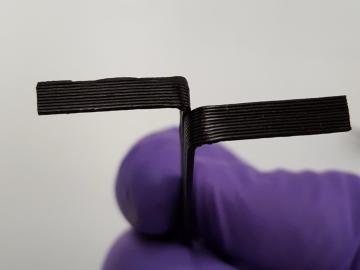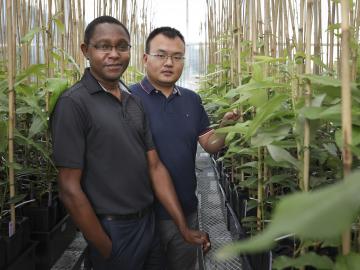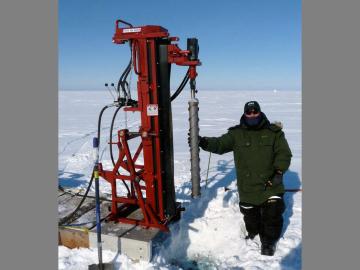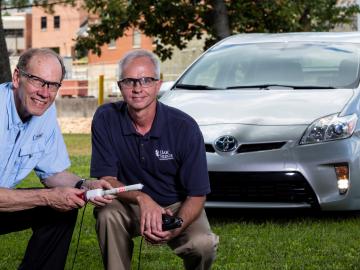
Filter News
Area of Research
- (-) Clean Energy (48)
- (-) Nuclear Science and Technology (14)
- Advanced Manufacturing (2)
- Biological Systems (2)
- Biology and Environment (4)
- Building Technologies (2)
- Climate and Environmental Systems (2)
- Computational Biology (1)
- Energy Frontier Research Centers (1)
- Fossil Energy (1)
- Fuel Cycle Science and Technology (1)
- Fusion Energy (1)
- Materials (52)
- National Security (2)
- Neutron Science (26)
- Nuclear Systems Modeling, Simulation and Validation (1)
- Sensors and Controls (2)
- Supercomputing (23)
News Topics
- 3-D Printing/Advanced Manufacturing (2)
- Advanced Reactors (1)
- Bioenergy (1)
- Biology (1)
- Biomedical (2)
- Climate Change (1)
- Computer Science (2)
- Cybersecurity (1)
- Energy Storage (1)
- Environment (2)
- Grid (3)
- Isotopes (2)
- Materials Science (2)
- Mercury (1)
- Molten Salt (3)
- Neutron Science (1)
- Nuclear Energy (4)
- Polymers (1)
- Security (2)
- Space Exploration (1)
- Summit (1)
- Transportation (3)
Media Contacts

Brixon, Inc., has exclusively licensed a multiparameter sensor technology from the Department of Energy’s Oak Ridge National Laboratory. The integrated platform uses various sensors that measure physical and environmental parameters and respond to standard security applications.

A scalable processing technique developed by Oak Ridge National Laboratory uses plant-based materials for 3D printing and offers a promising additional revenue stream for biorefineries.


When Michael Starke leaves the lab each day, he continues his work, in a sense, at home. The power systems engineer is developing methods to precisely control building electrical loads—and in his off hours, he has automated his own home with upwards of 90 smart devices to manage everything from heat...

A tiny vial of gray powder produced at the Department of Energy’s Oak Ridge National Laboratory is the backbone of a new experiment to study the intense magnetic fields created in nuclear collisions.

For decades, biologists have believed a key enzyme in plants had one function—produce amino acids, which are vital to plant survival and also essential to human diets. But for Wellington Muchero, Meng Xie and their colleagues, this enzyme does more than advertised. They had run a series of experiments on poplar plants that consistently revealed mutations in a structure of the life-sustaining enzyme that was not previously known to exist.

The U.S. Department of Energy’s Oak Ridge National Laboratory today unveiled Summit as the world’s most powerful and smartest scientific supercomputer.

Digging into the Arctic tundra, scientists at Oak Ridge National Laboratory have uncovered new insights into how quickly microorganisms break down organic matter in warming Arctic soil—a process that releases stored carbon as carbon dioxide and methane. The team studied soil extracted...

The Department of Energy’s Oak Ridge National Laboratory is now producing actinium-227 (Ac-227) to meet projected demand for a highly effective cancer drug through a 10-year contract between the U.S. DOE Isotope Program and Bayer.



